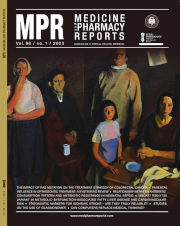Cervicogenic visual dysfunction: an understanding of its pathomechanism
DOI:
https://doi.org/10.15386/mpr-2507Keywords:
ACDF, blurred vision, chiropractic, cervical spondylosis, spinal manipulationAbstract
Atypical symptoms of cervical spondylosis include headache, nausea, gastrointestinal discomfort, blurred vision, tinnitus, hypomnesia, and palpitations. Successful treatment of these atypical symptoms has been achieved after conservative non-invasive and surgical spinal treatments, although the role of these interventions in mitigating atypical symptoms of cervical spondylosis is unclear. Our study introduces and elaborates on the visual dysfunction caused by cervical spondylosis. Although there are reports in the literature that spinal manipulation and surgery can improve visual dysfunction, the correlation has remained unclear and controversial. The article reviews the latest research to identify the possible mechanisms of visual dysfunction caused by cervical spine diseases.
Downloads
Published
How to Cite
Issue
Section
License
The authors are required to transfer the copyright of the published paper to the journal. This is done by agreeing to sign the Copyright Assignment Form. Whenever the case, authors are also required to send permissions to reproduce material (such as illustrations) from the copyright holder.

The papers published in the journal are licensed under a Creative Commons Attribution-NonCommercial-NoDerivatives 4.0 International License.

